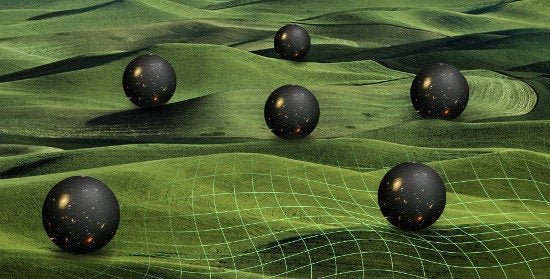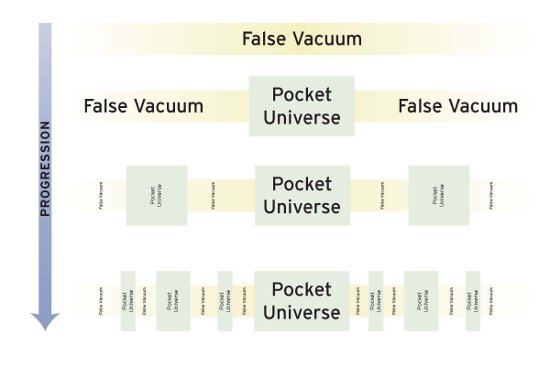
According to the inflationary model, our universe expanded exponentially when it was a tiny fraction of a second old, before decaying and settling into the more leisurely expansion we observe today (see "What Did Go 'Bang' in the Big Bang?"). Most cosmologists support the inflationary scenario, since it naturally explains a series of otherwise perplexing aspects of our universe (e.g., its isotropy, its flatness). However, there is one feature of cosmic inflation that is much more controversial. Inflation appears to be eternal, and it almost inevitably leads to the formation of a multiverse -- an infinite ensemble of universes! The reason is quite simple. Imagine that the universe started with some region of false vacuum, which (because of its repulsive force of gravity) expanded exponentially until some part of it decayed to produce a "pocket universe" like our own. At the same time, however, regions that remained in the false-vacuum state continued to expand furiously. Since the rate of expansion is actually expected to be faster than the rate of decay, the net result is shown schematically in Fig. 1: the formation of a huge number of pocket universes all surrounded by false vacua. In this picture, our pocket universe (with its own Big Bang) is but one member of this endless succession of bangs.

Figure 1. Inflation can create a fractal structure in which "pocket universes" are surrounded by false vacua.
Some string theorists (but definitely not all!) also like the multiverse idea, because string theory (the idea that all the elementary particles are the vibration modes of tiny strings in the spacetime fabric) seems to suggest the potential existence of an enormous number of putative solutions (of order 10) to the equations. Because solutions for stable (or metastable) spacetimes typically represent points of minimal energy, this scenario has become known as the landscape scenario, where universes find themselves in the "valleys" of this landscape (Fig. 2). Other string theorists, however, suspect that the huge number of solutions merely reflects the immature nature of the theory at present.

Figure 2. String theory currently predicts a potential "landscape" of some 10 universes.
Given that the different members of the multiverse are not causally connected, the key question that emerges is whether there is a way for us to verify whether such a multiverse truly exists. If there isn't, then one could justifiably argue that the theory crossed the border between genuine physics and metaphysics. As it turns out, there are at least two possible paths that could (at least in principle) test the multiverse scenario. First, there is a chance (albeit small) that if new pocket universes pop up at a sufficiently high rate, some of them would materialize so close to our pocket universe that they would collide with it. Physicists calculated that such a collision would have left an imprint of a hotter (or cooler) round spot in the cosmic microwave background (CMB). Searches in the CMB maps created by the Wilkinson Microwave Anisotropy Probe (WMAP) have yet to reveal any convincing signatures for such a cosmic collision, but given the enormity of the dataset, some researchers have not given up.
There is a second way in which physicists could be convinced of the existence of a multiverse, and that is if the multiverse scenario were to make a sufficient number of falsifiable predictions in our observable universe. In that case, just as we accept the existence of quarks even though no free quarks have ever been directly observed, we will have to conclude that the multiverse does provide the best explanation for the observed phenomena. At the moment we are still far from that situation (even though a few researchers suggest that the value of the inferred cosmological constant could be explained through the presence of the multiverse). Nevertheless, given that at least some directions for potential verification have been suggested, a number of influential physicists are convinced that the multiverse hypothesis should be regarded as speculative physics rather than as metaphysics.